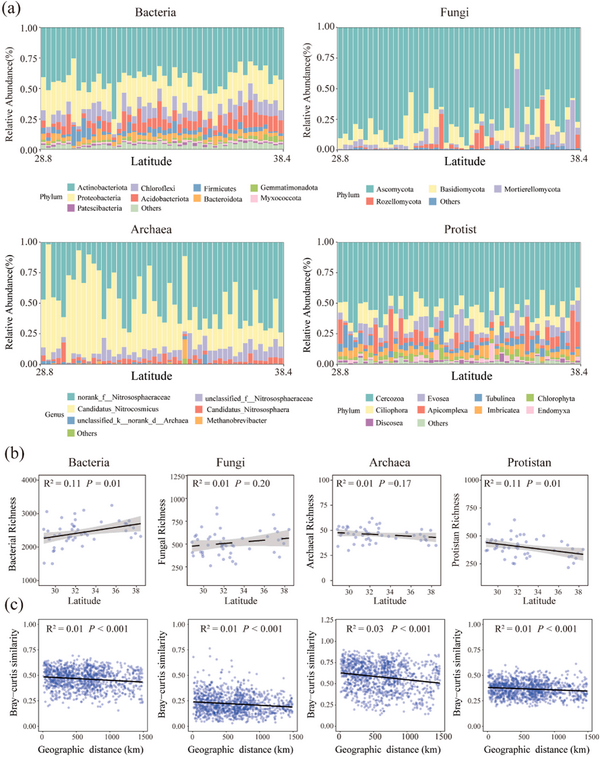Rhizosphere microorganisms play a vital role in enhancing plant health, productivity, and the accumulation of secondary metabolites. Currently, there is a limited understanding of the ecological processes that control the assembly of community. To address the role of microbial interactions in assembly and for functioning of the rhizosphere soil microbiota, we collected rhizosphere soil samples from Anisodus tanguticus on the Tibetan Plateau spanning 1500 kilometers, and sequenced the bacteria, fungi, archaea, and protist communities. We observed a significant but weak distance-decay relationship in the microbial communities of rhizosphere soil. Our comprehensive analysis of spatial, abiotic, and biotic factors showed that trophic relationships between protists and bacteria and fungi predominantly influenced the alpha and beta persity of bacterial, fungal, and protistan communities, while abiotic factors had a greater impact on archaeal communities, including soil pH, available phosphorus, total phosphorus and mean annual temperature. Importantly, microbial interactions had a more significant influence on Anisodus tanguticus physiological and ecological functions compared to inpidual microorganisms. Network analyses revealed that bacteria occupy a central position of the co-occurrence network and play a crucial role of connector within this community. The addition of protists increased the stability of bacterial, fungal, and archaeal networks. Overall, our findings indicate that trophic relationships play an important role in assembly and for functioning of the rhizosphere soil microbiota. Bacterial communities serve as a crucial link between different kingdoms of microorganisms in the rhizosphere community. These findings help us to fully harness the beneficial functions of rhizosphere microorganisms for plants and achieve sustainable use of biological resources.
The link below will guide you to the reading:
https://doi.org/10.1016/j.micres.2024.127603


Composition and geogrtribution of bacterial, fungal, archaeal and protistan communities in rhizosphere soil. (a) Relative abundance of dominant bacterial, fungal, archaeal, and protistan communities. Each phylum with a relative abundance of > 1% is shown, and phyla with a relative abundance of < 1% are defined as “others”. (b) Linear regression model for the latitude and alpha persity. (c) Distance-decay relationships for bacterial, fungal, archaeal and protistan communities at the OTU level. Geographic distance refers to the difference in distance between two locations, which is the straight-line distance obtained by subtracting the two locations.
